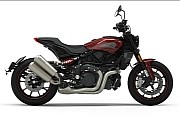history
Indian Motocycle is one of the oldest motorcycle manufacturers in the world and is based in Springfield, Massachusetts. The company was founded in 1901 by George Hendee and Carl Oscar Hedstrom, being initially known as Hendee Manufacturing Company. The first model produced by Hendee and Hedstrom, called 1901 Single, had 1.75 horsepower engine and it registered quite a lot of success.
Even since their early days, Indian bikes were designed to break records, as Louis Mueller travelled with an Indian from San Francisco to New York City in just 31 days, the previous record being of 49 days. The first English 1000-Mile Reliability Trial is won in 1907 by an Indian Twin, the same year that the New York Police Department buys two Indian Twins.
By the time 1914 came, the Indian production facility in Springfield had over 3,000 employees and the company is forced to stop racing activities in order to support the American war effort by supplying the army with 41,000 vehicles.
Another important moment in Indian's history came in 1923 when the company drops the 'r' from their name, becoming Indian Motocycle. In 1932, two new models made their debut, the Motoplane and the Pony Scout. Five years later, in 1937, Ed Kretz wins the Daytona 200 riding a Sport Scout. World War II starts and Indian is forced one more time to change its production line in order to manufacture vehicles for the army.
During the 1940s, the company undergoes some serious changes, as Torque Engineering buys Indian in 1945 and later separates it into two entities. The Atlas Corporation handles the manufacturing from now on, while Indian Sales Corporation is responsible for the distribution.
After the war ended, Indian had some trouble entering the public market one more time, so they reintroduced the Chief model in 1951, with no effect, the company going bankrupt in 1953.
Many tried to revive the Indian name over the years, but a new company based in California began manufacturing motorcycles under the Indian name in 1999, not before purchasing the rights of the trademark. However, the company didn't last long and this new venture went bankrupt in 2003. But there is still hope, because in 2004, Steve Heese and Stephen Julius acquired the Indian rights and the intellectual properties promising to start production again in 2007.
expand













